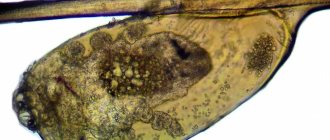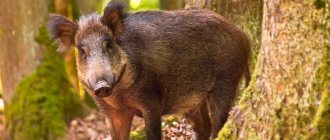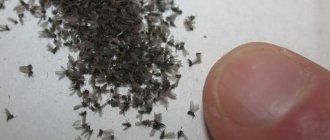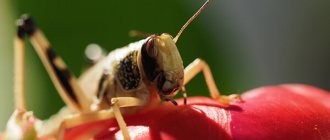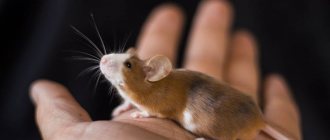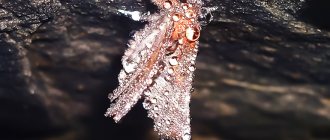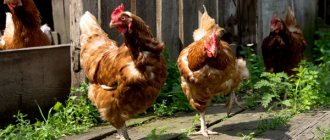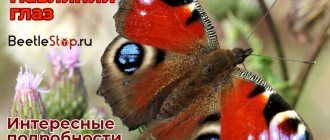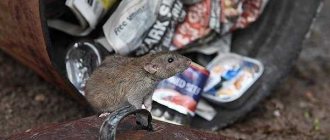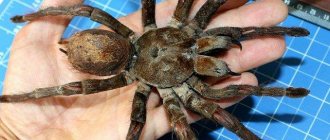Lifespan of a louse outside the human body
Body lice live mainly outside the surface of the human body, crawling onto it only to obtain food. Therefore, they are not so dependent on external temperature and other environmental conditions. The main condition for their normal existence is that the food source must be within the reach of insects. As for head lice, they are more dependent on humans. They feed more often than clothes, and are also adapted to lay eggs only on hair. Without a person, the head imago lives for 2-3 days at a comfortable temperature and the presence of air. If the temperature drops below 20 degrees Celsius, the imago goes into “hibernation” in anticipation of more comfortable conditions. This condition can last 1-2 weeks, depending on the temperature. The pubic adult is the most sensitive to external factors. Therefore, without a power source, it can last only 10 hours if other conditions remain favorable. While waiting, the louse slows down in development and reproduction. When the temperature drops, it can live outside the human body for about a day.
Life of lice in unfavorable conditions
Unfavorable conditions affect how long the imago can live and whether it can reproduce. By unfavorable conditions we mean:
- lack of food;
- fluctuations in ambient temperature by more than 10 degrees Celsius;
- lack of air for more than a day.
Life of an imago outside the human body
Many people, when faced with head lice, ask the question: “Do lice live in bedding?” Answer: “No, they couldn’t live in bed linen. They live in fabric seams and can crawl onto furniture or bedding where they can be seen.” Bed lice live quietly in the folds of clothing and the seams of fabric products. They crawl onto the human body only to obtain food, after which they return to their place of primary residence and reproduction. Traces of their presence can be identified by red spots from bites on the body. Ectoparasites live permanently on clothing, and if they get on a pillow, they only last as long as they can withstand without food - 1-2 days.
Lifespan of a nit
The nit is considered more resilient to environmental conditions. She does not need a food source because at the egg stage, everything she needs is inside the cocoon. However, temperature changes can also be destructive for them. Therefore, freezing things and treating infected areas with temperatures above 50 degrees Celsius are considered excellent methods for treating body lice, and in some cases, head lice without the use of chemicals. The life of a nit lasts no more than 5 days, after which it becomes a nymph. Under unfavorable conditions, development decreases; if nothing changes, the nit dies within a week.
To kill lice with cold, special devices are used. Walking in frosty weather without a hat, a person is more likely to catch a cold, but will not get rid of lice.
Can nits survive without humans?
Lice eggs are called nits. During her life, the female lays up to 120 eggs. They are small, round, white and attached to the base of the hair with an adhesive substance. The larva matures in them within a week. The nit has a fairly strong shell that protects the larva from mechanical and partly from chemical damage. When unfavorable conditions occur, nits, or more precisely, the larvae in them, are capable of falling into a state of suspended animation. This is a conditional deep sleep with “freezing” of all body functions. The larva stops its development, but remains alive. Some nits spend up to two weeks in a state of suspended animation. If after this they find themselves in normal conditions, they will continue their development and turn into adults, and then into adult lice.
be careful
According to statistics, more than 1 billion people are infected with parasites. You may not even realize that you have become a victim of parasites.
It is easy to determine the presence of parasites in the body by one symptom - bad breath. Ask your loved ones if your breath smells in the morning (before you brush your teeth). If yes, then with a 99% probability you are infected with parasites.
In women: pain and inflammation of the ovaries. Fibroma, myoma, fibrocystic mastopathy, inflammation of the adrenal glands, bladder and kidneys develop. As well as heart disease and cancer.
We would like to warn you right away that you do not need to run to the pharmacy and buy expensive medications, which, according to pharmacists, will eradicate all parasites. Most medications are extremely ineffective, and they also cause great harm to the body.
We suggest you read: How to get rid of bedbugs in an apartment
Fighting methods
Kerosene as a means of combating parasites
How to get lice out of your head using folk remedies?
- Kerosene - let's start with the fact that you should not resort to using kerosene if you have lice, as the liquid burns the skin. This can lead to dire consequences. When the integument is in normal condition, the petroleum product is extremely effective against lice and is completely safe. It not only removes the adults, but also destroys their eggs. For a positive effect, just wash your hair with the liquid and hold it under the bag for 10-20 minutes. Couples will do anything;
- Tar soap is a slow, healthy and simple option. Apply the product thoroughly to your hair. Cover everything with plastic for 6-8 hours. Rinse the vegetation and enjoy a healthy head.
How to get rid of linen lice using drugs from the pharmacy? They are inexpensive and effective. Look at the release formats:
- Shampoos - sold in pharmacies. Easy to use - instructions on the package;
- Ointments are less convenient, but people trust them more.
After using anti-lice products, you should carefully comb the vegetation to get rid of dead insect bodies. The problem is that there could still be nits in the home and on things. And here we move on to the next section.
Good to know: pharmacies sell special combs for combing out nits. They are distinguished by a dense arrangement of teeth, which makes it possible to remove 100% of unwanted objects.
How long do lice live?
Typically, an adult can live without food for no more than two days. Although there is an opinion that insects can live up to 10 days if the ambient temperature drops to 10-15 degrees. At low temperatures, adults hibernate, waiting for the next time of reinforcement.
In addition to human hair, bloodsuckers live well in linen, pillows and clothes, periodically biting their owner in different parts of the body. For example, a child can be bitten not only in the hair, but also on any closed area of the skin, since his skin is very delicate and ideal for insect punctures.
How long do lice live outside the human head?
No one knows how long adults live in clothes and bed, periodically feeding on blood. This way of existence puts their body into a slow life cycle, thereby slowing down their ability to reproduce normally. The same cannot be said about nits, which live quite a long time without feeding due to their durable outer shell.
Typically, adult individuals feed about 4-5 times a day, so it is easy to guess that a violation of the usual regime leads not only to a decrease in the reproduction rate, but also to death. Despite the fact that hair bloodsuckers live for about one month, this time is enough to multiply greatly.
Pharmacy products
Chemicals are also used at home. These include traditional insecticides and modern developments in the form of pediculicides. Before using any product, you must read the instructions for use. The most common pharmaceutical drugs include:
Appearance Features
You can see the body structure details common to all types of human lice; they do not differ significantly from each other.
- Despite the lack of eyes, this insect is photosensitive. A well-fed parasite will try to hide from the light, but a hungry one, on the contrary, will come out.
- The olfactory organs of lice are small antennae, with the help of which the parasites find their prey. Recent scientific research has shown an interesting fact. Household, human lice select a host based on their scent preferences, that is, by smell. Therefore, there are people who are not afraid of these parasites; lice are not attracted to their body odor.
- Having sensed a suitable body odor, the parasite can feed all day long; day or night does not matter to them. They do not have a rest period, like bedbugs, which feed on human blood only at night.
- The mouth of this parasitic insect is a small retractable proboscis, sharp enough to bite through the skin. The body of an insect can be roughly divided into the head and abdomen.
- The species of these parasitic insects belongs to the winged insects, but in the process of evolution the wings became very small in size, because lice feel great without them.
We suggest you read: How many wings do cockroaches have?
How do lice develop and where do they live?
It takes several weeks for the larvae to develop to the adult stage. The rate of development is determined by the temperature of the environment and the human body, in particular. If you are interested in how long lice live, you need to study the features of their life activity. The main stages of parasite development:
- The female leaves 1 egg on each hair. With severe infestation, nits can be found in larger numbers. It depends on the length of the hair.
- After 5-9 days the larva appears. The insect goes through 3 molts.
- The first time the larva sheds its outer covers shortly after emerging from the shell. This happens when she receives her first portion of food - approximately 1 hour after leaving the egg.
- The second time the insect molts after 5 days (the approximate period is indicated, this is how long it takes for the development of nymph I to nymph II under normal conditions).
- The last time the larva molts is after 5-8 days. After this, the insect becomes sexually mature and almost immediately begins to reproduce.
The length of the lice cycle depends not only on environmental conditions, but also on whether there is access to food. For example, it is enough for head parasites to feed 3-5 times a day (larvae suck blood more often - up to 10 times). This allows them to reproduce - the female lays eggs after each meal.
Pubic insects feed more frequently. They must receive food every 4 hours. After this, the insects also lay eggs. If you are wondering how long lice live outside the head, you need to take into account that pubic parasites tolerate separation from the victim worse. For this reason they die faster.
Habitats:
- the human louse (its head variety) lives on the human head, its limbs are designed so that it can only be on the hair;
- clothes insects infest the clothes of their victims, lice and nits of this species are found only on things that are close to the human body, parasites do not live in closets or other places where clothes are stored, close contact with the victim is important for them;
- pubic: most of the time they are located on the pubic area, but with severe infection they also live on other parts of the body where there is hair, but they do not creep onto the scalp;
- ciliary - this variety does not exist; pubic parasites settle on the beard, eyelashes, and armpits if they become cramped in their usual habitats.
Life cycle of lice
Head louse
Pubic louse
Eyelash louse
Photos of body lice
Lice in bed linen and more: what to do?
Collect all items that have been in contact with the infected person.
Any item that your child has used or worn in the two days before you discover lice on their head should be cleaned. Adult lice can only live for two days if they do not feed on the host's blood.
The first step is to collect your bedding for washing, as lice remain on the bedding. In addition to bed linen, you should not forget to send for washing:
- Towels;
- Clothes, including outerwear;
- Hair accessories – headbands, headbands, etc.;
- Hats;
- Pillows and pillowcases;
- Soft toys and any products made of artificial fur;
- Briefcases and bags.
Sort contaminated items
Sort your collected items into the following types:
- Items that can be washed in a washing machine or by hand;
- Items that can only be dry cleaned;
- Items that cannot be cleaned or washed – neither wet nor dry.
Clean contaminated items and items
For items that can be washed, such as bedding and towels, use the hottest setting your washing machine can handle. When drying, it is better to also use heating elements to make sure that all insects are dead.
For really delicate fabrics, use the following method - soak them in warm water with plenty of washing powder for several hours, and then wash as usual. After this, lice are unlikely to survive on bedding.
Items that can only be dry washed should be placed in plastic trash bags and kept there until you can dry clean them. Do not forget to warn the cleaner about the risk of infection.
For those items that cannot be washed in any way, there are two routes you can take to get rid of the problem in your home.
- The first way is a week-long quarantine. Place the items in a plastic bag or bag and tie it tightly, leaving it for a week. Afterwards, vacuum each element to remove any dead lice.
- If you cannot afford to quarantine an item for a week - perhaps it is a child’s favorite toy, without which he cannot sleep, use freezing. Adult lice cannot tolerate extremely cold temperatures. Infected items can be placed in the freezer, pre-wrapped in a bag, for 4 hours.
How long do lice live outside humans?
The disease is easily recognized by severe itching and bites. Despite how long and in what part of the body the lice live, they notice that in a short cycle the bloodsuckers manage to raise a new generation.
Knowing that the ectoparasite is associated with humans, the question arises of how long lice live outside the victim’s head. It depends on the temperature. At 23-27°C, the production period reaches 3-4 days. If the degree rises to 30 or higher, then the maximum existence is reduced to 1 day.
In many ways, how long adult lice live outside the human head depends on the need for food. At low temperatures, parasites go into suspended animation. The processes slow down, the bloodsucker lasts longer, but how long lice live when frozen outside the head depends on the temperature. An indicator of -10°C increases the period by 10-14 days.
Life cycle
In areas with large crowds of people, it is easy to become infected with pediculosis; it is enough for 1 adult to cross the victim’s body. The victim may not notice the ectoparasite, because the length of the bloodsucker does not exceed 3 mm, the color fluctuates in shades of brown and gray, making the parasite inconspicuous.
Head insects feed on blood. Bloodsuckers do not have wings, but thanks to their 6 legs, individuals run well.
The entire life cycle of the head bloodsucker is 30-40 days. Immediately, the adult female lays 2-5 eggs, tightly held by a special paste near the roots of the hair. They are difficult to wash off and comb out. When the incubation period has passed, a small individual appears, and after the first meal, the bloodsucker undergoes a moult.
This is required to shed the shell, which is unable to grow along with the individual. When the period ends, the bloodsucker becomes an adult and begins to reproduce. The eggs hatch a few hours after mating is completed.
The parasite lives on the human body for 30-45 days and lays 100-150 eggs. Without people or food, adults die within a few days. Bloodsuckers need food 4-6 times a day.
In a suitable environment, the ability to function outside the head lasts 3-4 days. Without a portion of human blood at birth, the parasites will die immediately. Away from food, lice and nits live as long as they can survive without food.
Stages of development
Knowing how many days head lice live, they divide the period into several phases:
- Egg. The first stage takes 1-2 weeks, depending on environmental conditions - humidity, temperature.
- Larva. Hatches from eggs, capable of breathing. The collected air at the bottom of the nit pupa pushes the creature out. The bloodsucker starts searching for food, and after a day moves on to the next stage.
- Nymph of the first level. Immature insect. The reproductive organs have not yet completely finished forming.
- Nymph of the second level.
- Nymph of the third age.
- Imago. A fully adult insect with formed organs, capable of reproducing.
FAQ
To dispel doubts and prejudices, here are a few frequently asked questions to consider.
Lice and pets: is coexistence possible?
Finding out how long lice can live outside of humans, some believe that pests, in search of food, can move to domestic animals - dogs, cats. However, numerous studies have shown that this form of parasitism is impossible for a number of reasons:
- lice eaters that live on dogs have longer stylets, specially adapted to bite through skin that is thicker than that of humans;
- Cat lice choose this type of pet exclusively for their habitat.
It is important to remember that even if the lice eaters of one of the four-legged animals land on a person’s head, they will not stay there for long and at the first opportunity they will return to a more suitable source of food
Is the bed suitable for head lice?
Bedding, no matter what material it is made from, is not a habitat for lice. The reason for this is the inability to lay nits. Of course, sometimes you can see an insect, for example, on a pillow. But it got there by accident, falling from the head, and will leave it as soon as contact with a person is available
This is why it is so important to observe personal hygiene rules if one of your family members is found to have lice.
Can lice live on lost hair?
Some people, based on the fact that lice cling tightly to hair with their paws, believe that these insects can survive on dead curls. However, such a judgment is deeply erroneous.
Hair is not a source of food for insects. They cling to them solely to prevent them from falling while moving, washing, or combing. Accordingly, cut hair that has fallen out is not of interest as a source of replenishing energy reserves.
It is convenient for lice to lay nits exclusively on long hair. That is why they extremely rarely settle on mustaches, beards, and eyelashes. Such hair is of no interest even for pubic lice, since it is too sparse and removed from voluminous, large sources of nutrition - veins and arteries.
Knowing important points about lice, you can prevent infection, and if it does occur, you can quickly take measures to remove the parasites.
Can there be lice on short hair?
Lice live on hair of any length. For them, the main thing is access to fresh blood, the presence of hair to cling to and attach eggs. Hair length is not critical, although some experts are inclined to believe that long hair is preferable for parasites. But this version is not confirmed in fact. Both women with luxurious long hair and men with short haircuts suffer from pediculosis.
Lice
If we talk about pubic lice, they initially settle in the groin area and in the lower abdomen, that is, in short hair. And when the colony grows, the parasites move to the eyebrows, eyelashes, and beard.
How long do lice live outside the head?
Lice cannot appear in humans on their own. These insects do not fly, so they can only be infected by contact.
Pediculosis is contracted in the following ways:
- In public transport, with large crowds of people.
- When visiting public places (saunas, baths, swimming pools, gyms).
- When visiting a hairdresser.
- At school, kindergarten, hospital, sanatorium.
- In direct contact with a person infected with lice.
- Family members, through household items.
https://www.youtube.com/watch?v=ZW-bSQZ9Rk4
Despite the fact that lice are considered companions of unsanitary conditions, they prefer to settle on clean, healthy hair.
Symptoms of head lice depend on how intense the infestation is. If the number of parasites is small and the sensitivity of the skin is low, then the patient may not have any complaints for a long time.
The main symptoms of pediculosis are:
- Intense itching in the scalp.
- Small spots on the skin of a grayish-bluish color.
- Exoriation (scratching).
- Visually, impetigious lesions are identified on the scalp, which are covered with a honey crust and eczematization of the skin. Especially in the area of the folds behind the ears, the back of the head and temples.
- Hemispherical inflammatory papules appear at the site of the bites. Scratching may cause a pyogenic infection.
- The presence of nits in the hair.
Head lice reproduce very quickly. Their entire life cycle, from the first nit to the egg laid by the adult parasite, is 16 days. If the conditions for their development are unfavorable, then this cycle can last up to 30 days.
This means that after two months, a person infected with lice will have a population of parasites living on their head. Within three months they will make their owner's life unbearable.
Without food, this parasite can live no more than two days. When the temperature drops to 10 - 12 C, the insect can live without food for about ten days.
There are many reasons why your head may itch in the absence of lice:
- Seborrhea. The cause of the disease is a change in the composition of sebaceous secretions and sebum formation. Seborrhea can be oily, dry or mixed. One of the manifestations of the disease is dandruff.
- Dry scalp. In this case, the hair is dry and brittle, becomes highly electrified and slowly becomes dirty. This causes itching of the skin. Typically, dry skin occurs from a lack of vitamins.
- Allergy. Itchy scalp can occur as an allergic reaction to hair dye. Therefore, dye manufacturers, trichologists and hairdressers recommend conducting a sensitivity test a day before dyeing your hair. An allergy to detergents can also cause itching.
- Fungal infection of the scalp. Characterized by severe itching and dandruff.
How can you tell if nits are dead? In appearance, despite its tenacity, a dead nit differs from a living one in several ways:
- dead has a dull gray or whitish color;
- There is no characteristic click when crushing a dead nit.
We fight on our own in the house
Nits in the sofa
Pubic: To eliminate lice, it is recommended to perform the following steps:
- Wash in boiling water - a 90 degree setting is fine;
- Freeze objects - an alternative method is to place clothing and other items in the freezer for 12-14 hours;
- Shave all the hair - armpits, groin, preferably also the legs. Check your eyebrows carefully. If necessary, clean them with tweezers or your fingernails.
Clothes: in order to remove a linen louse, but it does not live on you, only on things, you will need to disinfect the items. Washing with powder will not help in this case; boiling is also required. It is better to resort to special preparations from the pharmacy, but they are not always effective - insects are constantly developing and adapting to poisons, and products from stores are often not updated for several years. It’s not a fact that they will remove the lice entirely.
Head nits: their nits are able to remain along with the hair on the sofa. Individuals will gladly crawl to the side, from where the lice can move to other family members or return to the previous host. To clean the room, you can buy substances at the pharmacy or use the following products:
- Garlic (hang, grate and place on the table);
- A mixture of water and salt (sprinkle on furniture and floors, you can put everything in a bag);
- Citrus (lay out the peels - there will be a pleasant smell in the house);
- Chlorine and vinegar (wash everything around with solutions);
- Needles (another reason to put branches in the house).
The main problem remains the inability to clean all corners of the home. Hundreds of cracks and cracks in the sofa alone open up enormous opportunities for the secretive presence of a blood-sucking pest in the furniture, from where lice can easily get out later.
Causes of nits
Nits appear only after an adult louse moves to an area of the human body (head, groin, armpits). Relocation can occur as a result of contact, use of things of an infected person, etc.
After infection, one female lays at least 5 eggs per day. In a month, an insect that reaches only 4 mm in length brings up to two hundred eggs, and this is not the limit. Eggs mature in 5-7 days; After hatching, the larvae become capable of reproduction within a week, and the number of nits increases several times.
How they appear
Nits appear in two cases. The first is when the female louse jumps from one host to another during close contact. And the second is when a healthy person uses a comb (hat, hair tie, hair clip) of an infected person. In the latter case, only a small part of the nits gets stuck on the hair on the head.
What they look like
All nits are covered with a sticky membrane. They are capsules attached to the hair thanks to glue and a tail, which acts as a retainer.
To help those who are faced with an unpleasant phenomenon, there are several differences between dandruff and nits:
- Dandruff is easier to remove with a regular comb because it glides along the entire length of the hair. Unlike nits, which are held on the hair surface by an adhesive membrane.
- The shape of nits is smooth and round, dandruff is irregular and heterogeneous. Nits are the same size compared to dandruff.
- Nits cannot fall on the collar and shoulders of clothing, like dandruff. They leave the head only with the hair.
- Dandruff causes mild irritation, lice causes severe itching.
- Lice lay eggs in 3 places: on the frontal lobe, on the back of the head and on the temples. Dandruff appears mainly on the top of the head.
- Dandruff does not make a dry clicking sound when pressed.
In addition, dandruff is easier to remove than lice.
Causes of lice
The problem under consideration is very relevant, because these parasites, as a rule, appear suddenly.
In fact, despite numerous myths, it is necessary to understand the main thing - lice are external parasites, and only humans can be their carrier.
Lice feed on human blood, while the “owner” himself constantly suffers from discomfort, manifested in the form of itching and pain in the affected areas.
By the way, lice can be of several types:
- pubic; pubic lice
- head louse
- body lice. Linen lice (body lice)
And if we look deeper into the problem of head lice, we can identify several main reasons.
Table. Where do lice come from?
| Public places | These are potential risk areas. A striking example would be, say, child care institutions. Children often become infected with head lice in kindergartens and schools. |
| Water | Yes, water can indeed act as a source of infection, since lice can live in it for some time. That is why it is quite possible to pick up parasites in a body of water with stagnant water, not only in a pool, but also in a rural lake. |
| Close contact | As noted above, lice can be transmitted through human interaction. This could be, for example, kissing or sexual intercourse (more relevant to pubic parasites), group games (mainly childhood infections). |
| Neglect of hygiene rules | Parasites are more often acquired by those who neglect personal hygiene and live in unsanitary conditions. |
| Long journey | The risk of infection in such cases increases. And the point here is not only that there is not always access to the simplest hygiene procedures, but also that on the road you have to come into contact with a large number of people, including carriers of lice. |
| People living together | This applies to places where large numbers of people live (summer camps, prisons, etc.). |
| Personal belongings of the bearer | Towels, combs and other items of a carrier that contain lice or nits can also be contagious. Few people know that these parasites can live without air for up to 24 hours. |
https://www.youtube.com/watch?v=oDiNUzOWk5c
Important information! According to statistics, lice most often become infected in the autumn and winter, when people spend most of their time indoors, actively contacting each other.
But, in principle, pediculosis can appear under different circumstances. So, just standing next to the carrier on public transport is enough for the parasites to crawl onto the other person’s hair.
Yes, lice cannot jump like fleas, but they crawl quickly (about 4 mm/sec), and when they get on a new “host”, they begin to actively bite him and multiply.
The incubation period of pediculosis, by the way, takes about three weeks.
Lice - a childhood disease
No. Parasites do not care at all how old their victim is. The main thing is to have hair to feel safe. In children's groups, lice are common due to the large number of participants and due to the fact that children do not have any special barriers to communication with each other: children willingly try on each other's hats and hairpins during play, exchange fluffy toys, often hug and make contact in every possible way . If one child in a group develops lice, then within a couple of days the parasites may appear in others. All members of their families, regardless of age, will have to undergo preventive procedures.
How long do lice live outside the human head?
Lice survive only at the expense of their host, on whom they parasitize. Can lice live outside humans and for how long? Each type of insect can only live on a specific mammal.
The opinion that lice are transmitted from pets is completely erroneous.
Blood-sucking insects feed frequently and in small portions, and females bite more often than males, but how long can lice live without humans?
A head louse deprived of food in the environment can exist without a person for about 2 days, or more precisely, about 55 hours - that’s the entire length of time that lice live without a person.
Types of lice
The insect is divided into three types, depending on the place of life:
- Cootie. She is attracted by the human smell and is unable to live on a body. The parasite lives in folds of clothing and bedding.
- Pubic louse. Can live where coarse hair grows - eyelashes, mustache, pubis, armpits.
- Head lice and nits. They live only on the human head.
Those who are faced with a disease such as lice begin to wonder how long lice live without food. Each species differs from each other in this regard:
- The head dies after 2 days without human blood. The nit will go through its life cycle completely, but the hatched larva, without finding food, can live only for an hour.
- The pubic look won't last more than four hours. The egg will develop until it is the turn of the nymph to hatch, which will immediately die.
The human body is not suitable for permanent residence. Then the question arises: can lice live in pillows and blankets? This type of insect is able to take a liking to bedding, but only if it has access to a food source. No matter what type of lice they are, they do not live without humans.
How to prevent the appearance?
So that you do not have to buy anti-lice products and call the SES to remove pests from your home, furniture and belongings, you should follow precautions. It is extremely important to tell children about them:
- Do not wear or touch other people's hats;
- Do not store hats in public places outside of some kind of packaging;
- Do not remove the accessory in the house while wearing it;
- Don't use other people's combs.
But to think that a dirty head can provoke the appearance of “tenants” that we don’t need is wrong. On the contrary, it is much easier for creatures to move along clean, well-washed strands. Therefore, those who bathe several times a day are more likely to face the need to destroy nits and adult individuals.
Where do lice live besides the human head?
Head lice live at home in any belongings of an infested person. This could be bed linen, pillows, clothes, combs and even home carpets. Therefore, at the first opportunity, they easily end up back in the hair or to a completely different person. For this reason, infection often occurs in children's sports or dance sections, where children share mats and costumes. At the same time, girls with long hair are more susceptible to infection than boys with very short haircuts.
Do lice live in colored and short hair?
Despite the widespread belief that lice live at any length of hair, there is still a greater chance of getting into long strands than short ones. There have been cases when all family members became infected, except those who had very short haircuts. This suggests that lice are not comfortable living in hair that is too short.
Parasites also get along well in dyed hair, but until you dye your head again. Since many paints contain hydrogen peroxide, insects cannot survive the effects of the painting process.
Do lice live in bedding and pillows?
If there are a lot of head parasites, they can move onto bedding and pillows
Therefore, very often infection occurs in not very clean hotels and inns, where insufficient attention is paid to bedding. Parasites can live in bedding for quite a long time, provided they are periodically supplied with blood.
Do head lice live on clothes?
Of course, head insects also live on clothes. But in addition to hair parasites, clothing parasites can also live in clothes. There may also be chicken fleas that also bite people. In closed seams of clothing, clothes insects can not only hide, but also develop, leaving behind their larvae. Therefore, if there is any suspicion of the presence of bloodsuckers in underwear or clothing, it is necessary to thoroughly wash it at high temperature or boil it. And those fabrics that cannot be boiled can simply be hung outside for two weeks.
Can lice live under the scalp?
Despite the popular belief about subcutaneous lice, they actually do not exist in nature. And under the skin live scabies mites, which parasitize only in the subcutaneous areas of humans. Unlike head parasites, the scabies mite selects places on the body where hair does not grow, finding very delicate areas of the skin. Most often this is the interdigital area, the groin area and armpits, the lower abdomen and sides of the chest. Ticks are removed with completely different drugs, which are used not only externally, but also internally.
How to get rid of linen lice
When bed lice are detected, comprehensive control is necessary. You need to get rid of insects and nits that can be on the human body and on his things. If parasites are found in one of the family members, not only him, but all of them will have to be treated.
Firstly
It is necessary to destroy insects on clothes. To do this, it must be washed at temperatures above 40 degrees. To be on the safe side, you can pre-soak things in a pediculicide solution. After washing, you need to dry the clothes well, you can do it in the scorching sun or, conversely, in the cold. Then you should iron your clothes and linen on both sides with an iron. It is good to use a steam generator for processing.
If items cannot be washed in the usual way, they can be dry cleaned. If they are not subject to any processing at all, you need to put them in a sealed plastic bag and leave them there for 2 or 3 weeks. During this time, the parasites will die due to lack of food. Eggs laid during this time will not be able to develop and will die. After such imprisonment, the item must be thoroughly cleaned to remove insects, nits and traces of their presence.
You can also use the temperature method. For example, pillows, blankets, rugs can be taken out into the scorching sun or bitter cold. This is a folk method that does not lose its relevance. But things must be subjected to heat treatment for several hours.
Secondly
All furniture needs to be treated. For cleaning, you should use a steam generator or call special services that use professional cleaning products. Steam treatment is effective because it penetrates the entire thickness of the furniture and destroys insects that are deep under the upholstery.
Any home textiles and cabinet furniture should be treated with pediculicides. We recommend using preparations for the destruction of lice produced by MediLIS Laboratory LLC. All of them are effective against insects and nits, for the destruction of which one treatment is enough. There are preparations that can even be used to treat children over 5 years of age and their belongings.
Also, with insecticide solutions, you need to wash all floors and any surfaces in the room on which adult lice or eggs may remain.
Third
It is necessary to process all people living in this room. Despite the fact that body lice do not live on the human body, they can hide in hair, and nits can be found under skin flakes. On a person, a linen louse can survive difficult times, after which it will move to more comfortable conditions, where it will continue to live and reproduce. To ensure that you get rid of lice, you need to thoroughly wash your body and hair with pediculicidal products. To be on the safe side, comb your hair with a fine-toothed comb. That is, carry out the same treatment that is carried out when fighting head lice.
Considering that the incubation period for nits is 5–8 days, after a couple of weeks it is worth carefully inspecting the room, clothes and underwear to detect new individuals. Due to the small size of the eggs and their ability to survive difficult times in a state of suspended animation, it may turn out that even complex treatment does not destroy absolutely all nits. Therefore, additional checking and processing will not hurt.
Folk remedies
Ancient methods of fighting parasites have not lost their relevance. Previously, lice were treated with kerosene - they smeared the body with it and added it to the water when washing. Today such aggressive treatment is not used, but you can find many effective products that do not leave an unpleasant odor. Regular table vinegar (9%) diluted with water in a 1:1 ratio helps against insects. This solution is used to treat linen, clothing, hygiene items and personal items, and to wash floors and walls.
Turpentine, which dissolves the protective shell of linen parasites, has the same effect. People with hypersensitivity to strong chemical odors may be advised to use herbal infusions, such as tansy or milkweed. If you place dry twigs and leaves of fern, chamomile, tansy in the closet, their aroma will repel insects.
Bed lice cannot tolerate the smell of lavender and tea tree. A few drops of essential oil are added to water, poured into a spray bottle and treated with linen and clothes. Herbal decoctions can be added to the washing machine and wiped all the shelves and upholstery with them. After cleaning the room, be sure to take a hot bath.
Dust soap
A wonderful pediculicide, actively used by people. First, the soap is grated. The resulting shavings are dissolved in water and beaten. To completely remove lice, one treatment is sufficient. Remember that you need to carry out the processing procedure while wearing rubber gloves. Contact of dust soap with the skin is extremely undesirable. After the procedure, the laundry should be rinsed thoroughly. Do not neglect safety tips, as dust soap is a toxic substance.
Tar soap
This drug should be used like dust soap. Unlike the latter, tar soap does not pose a danger to human health. But the effectiveness of this remedy is much less.
Some herbs are also used against body lice, but it must be said that they are even less effective than tar soap, and they are used more as a prophylactic agent or for low degrees of infection.
You can wash infected laundry in mint decoction; the smell is simply disgusting to lice, but this remedy, of course, cannot be called effective. Lemon juice is also used to remove parasites; it is added in large quantities to the water in which contaminated laundry is washed. Also for this purpose, use an alcoholic infusion of angelica or a mint decoction.
Effective insecticidal preparations
It’s clear where pests come from, but not everyone knows how to quickly get rid of them. First, you need to wash and treat all things that the infected person has come into contact with. For this purpose, you can use a Karbofos solution prepared from 6 g of insecticide and 2 liters of hot water. Bed and underwear are soaked in the resulting product, applied to beds and chairs, and wiped all horizontal surfaces. After 40–50 minutes, the solution is washed off with clean water.
Some people advise adding Karbofos or kerosene to the washing machine, but this should not be done. You can soak clothes or linens in an insecticide solution, and then wash them at high temperatures and rinse. Boiling will help destroy parasites, and Karbofos can be replaced with the less toxic, effective Medifox. Outerwear, fur items, down jackets and feather pillows will have to be dry-cleaned, where they will be disinfected in a formalin-vapor chamber.
Then you need to start treating the body, for which you need to take a shower with any antiparasitic agent. For this purpose, special shampoos, ointments or sprays are used. The most popular means:
- con (effective against bedbugs, as well as fleas, cockroaches, scabies mites);
- lotion "Nittifor";
- means "Bubil";
- Pedilin shampoo;
- spray "Veda-2".
According to the instructions, prepare a solution or apply the preparations to clean skin for 20–40 minutes, wrapping the body in plastic wrap. After the allotted time, you can take a shower with soap or gel and rinse well with clean running water.
Complex treatment is carried out immediately, on the same day, to prevent re-infection. Washed and processed clothes are hung outside, where they are left to dry, and then carefully ironed.
This is perhaps the most effective drug. Its developers claim that it can get rid of not only lice, but also nits. Sold in aerosol form. It consists of two active components - Piperonibutoxide and Esdepalletrin. Before using the drug, things should be washed in the manner indicated above, after which the drug is sprayed over the entire surface of the clothing.
Akromed
The main active substance of this drug is Permethrin. It also contains kerosene, but there is no need to worry about the appearance of a characteristic odor. The drug is sold in the form of an emulsion, four liters of which is enough to treat 1 kilogram of things.
Forsyth
It is also a very effective drug, the main active ingredients of which are Permethrin and Fenthion. Sold in the form of an emulsion that requires preliminary preparation. 20 ml of the drug is diluted in a liter of water. To process a kilogram of things you will need 4 liters of ready-made solution. The treatment procedure requires repeating after a week.
Avicin
Active substance – Permethrin. To prepare the solution, take 1 part emulsion and 100 parts water. Soaking time for contaminated items is 25 minutes.
Celandine
The active substance of this drug is the same Permethrin. The drug is sold in the form of an emulsion, ready for use.
How do lice develop and where do they live?
When the reproductive system reaches maturity, the female is able to lay eggs without contact with the male, but they will remain empty. The male must fertilize the female at least once, and she will lay viable eggs throughout her life.
Two days after mating, a sexually mature female lays fertilized eggs on the hair roots. 2-4 eggs appear daily.
The period of development of an insect to an adult takes about 20 days and includes several stages:
Lice development stage.
- Egg or nit stage. Duration on average 7 days. Optimal conditions: temperature – about 30°C, humidity – 70%. These factors are present at the hair roots on the human scalp. The egg is coated with a specific protective composition that makes it invulnerable. The mucus secreted by the louse during the laying process firmly attaches the nits to the spine, so it is almost impossible to get rid of them. At the egg stage, the parasite does not feed or breathe.
- Larva. First age. It is born by gnawing through the shell of the egg. The duration of this stage is from 3 to 10 days. She already looks like an adult, but smaller in size. Once hatched, the larva attaches itself to the hair and begins to feed. After the expiration of the term - the first molt.
- Nymph stage. It takes place in 2 stages and lasts 8 days. At this time there is active growth. The chitinous cover becomes tight and is shed by the insect 2 times. The first instar nymph molts for the first time on the fifth day and enters the second instar nymph stage. By the end of this stage, the reproductive system is fully formed. After the second moult comes the last stage of insect development.
- Imago stage. An adult, capable of reproduction, is formed and ready for mating after the first meal.
There are 3 morphotypes of human louse:
- head;
- pubic;
- wardrobe
The habitat of the head louse is human hair, including the beard, mustache, eyebrows and eyelashes. Here the parasite settles, feeds and reproduces.
The vegetation of the lower part of the body can become a haven for pubic lice.
Types of lice.
These two types of bloodsuckers are adapted to survive on hair of different textures. The legs of the head louse are adapted to movement and attachment to the round spine.
The pubic hair can only exist on the lower hairs, which have a triangle in cross-section.
Nature took care of the survival of the species: small size (2-4 mm), flat shape and the ability to mimicry allow the parasites to remain invisible.
Contrary to popular belief, these bloodsuckers feel more comfortable on clean hair and body. Washed skin is easier to bite through and more comfortable to move on.
Lice infestation is not only an unpleasant disease, but also a dangerous one. It is called pediculosis, from the Latin name of this parasite - Pediculus.
It is enough for one adult female to land on a human body, and within a month the number of insects will reach two hundred.
This is interesting: Recipes for masks against hair loss at home - a collection against baldness!
Pros and cons of folk remedies
There are different ways to remove lice at home from children and adults. Traditional methods have many advantages:
Thanks to the above benefits, folk remedies are quite popular. In addition, they are relatively safe. But it is important to consider some disadvantages:
You may be interested in: Human roundworm: life cycle, structure, routes of infection
Home methods are in demand due to their safety. The main thing is to choose the most suitable method of treating head lice. And then you will be able to get rid of it as quickly as possible.
